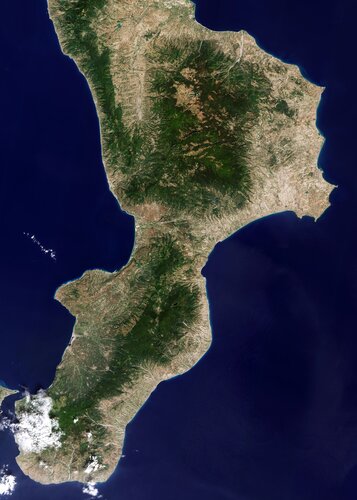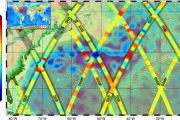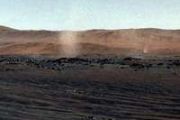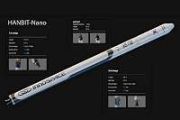
Copernical Team
The Biomass satellite and disappearing 'football fields'
 Forests, especially tropical rainforests, are guardians against climate change. But our forests are burning. They are withering and dwindling. Our guardians are themselves threatened by climate change. A new European Space Agency (ESA) satellite mission, currently being built by Airbus, is set to investigate exactly how our forests are faring. The name says it all: Biomass.
Our forests and
Forests, especially tropical rainforests, are guardians against climate change. But our forests are burning. They are withering and dwindling. Our guardians are themselves threatened by climate change. A new European Space Agency (ESA) satellite mission, currently being built by Airbus, is set to investigate exactly how our forests are faring. The name says it all: Biomass.
Our forests and SpaceX satellite signals used like GPS to pinpoint location on Earth
 Engineering researchers have developed a method to use signals broadcast by Starlink internet service satellites to accurately locate a position here on Earth, much like GPS does. It is the first time the Starlink system has been harnessed by researchers outside SpaceX for navigation.
The Starlink satellites, sent into orbit by Elon Musk's SpaceX, are designed to provide broadband internet
Engineering researchers have developed a method to use signals broadcast by Starlink internet service satellites to accurately locate a position here on Earth, much like GPS does. It is the first time the Starlink system has been harnessed by researchers outside SpaceX for navigation.
The Starlink satellites, sent into orbit by Elon Musk's SpaceX, are designed to provide broadband internet What's behind Africa's increasing drive to launch satellites
 Twenty-two years after putting the first African satellite into orbit, the continent's satellite fleet currently stands at 44. With Africa's most recent satellite launch taking place in June 2021, the next few years may see more launches on the continent.
The consultancy Space in Africa recently reported that 44 satellites have been sent into orbit by 13 African countries since the launch
Twenty-two years after putting the first African satellite into orbit, the continent's satellite fleet currently stands at 44. With Africa's most recent satellite launch taking place in June 2021, the next few years may see more launches on the continent.
The consultancy Space in Africa recently reported that 44 satellites have been sent into orbit by 13 African countries since the launch Earth from Space: Calabria, Italy

Calabria, often referred to as the ‘boot’ of Italy, is featured in this image captured by the Copernicus Sentinel-2 mission.
Hubble snapshot of "molten ring" galaxy prompts new research
 This Hubble picture exemplifies the fact that the universe is a vast stage for grand illusions. Albert Einstein realized this a century ago as he formulated his law of general relativity. Gravity, he said, warped space like stretching and twisting a rubber sheet.
The consequences would be that images of distant objects would be magnified, brightened, and distorted into funhouse mirror view
This Hubble picture exemplifies the fact that the universe is a vast stage for grand illusions. Albert Einstein realized this a century ago as he formulated his law of general relativity. Gravity, he said, warped space like stretching and twisting a rubber sheet.
The consequences would be that images of distant objects would be magnified, brightened, and distorted into funhouse mirror view Gigantic cavity in space sheds new light on how stars form
 Astronomers analyzing 3D maps of the shapes and sizes of nearby molecular clouds have discovered a gigantic cavity in space. The sphere-shaped void, described in The Astrophysical Journal Letters, spans about 150 parsecs - nearly 500 light years - and is located on the sky among the constellations Perseus and Taurus. The research team, which is based at the Center for Astrophysics | Harvard and
Astronomers analyzing 3D maps of the shapes and sizes of nearby molecular clouds have discovered a gigantic cavity in space. The sphere-shaped void, described in The Astrophysical Journal Letters, spans about 150 parsecs - nearly 500 light years - and is located on the sky among the constellations Perseus and Taurus. The research team, which is based at the Center for Astrophysics | Harvard and Hubble finds early, massive galaxies running on empty
 When the universe was about 3 billion years old, just 20% of its current age, it experienced the most prolific period of star birth in its history. But when NASA's Hubble Space Telescope and the Atacama Large Millimeter/submillimeter Array (ALMA) in northern Chile gazed toward cosmic objects in this period, they found something odd: six early, massive, "dead" galaxies that had run out of the col
When the universe was about 3 billion years old, just 20% of its current age, it experienced the most prolific period of star birth in its history. But when NASA's Hubble Space Telescope and the Atacama Large Millimeter/submillimeter Array (ALMA) in northern Chile gazed toward cosmic objects in this period, they found something odd: six early, massive, "dead" galaxies that had run out of the col Cloudy days on exoplanets may hide atmospheric water
 Water is a hot topic in the study of exoplanets, including "hot Jupiters," whose masses are similar to that of Jupiter, but which are much closer to their parent star than Jupiter is to the sun. They can reach a scorching 2,000 degrees Fahrenheit (1,100 degrees Celsius), meaning any water they host would take the form of water vapor.
Astronomers have found many hot Jupiters with water in t
Water is a hot topic in the study of exoplanets, including "hot Jupiters," whose masses are similar to that of Jupiter, but which are much closer to their parent star than Jupiter is to the sun. They can reach a scorching 2,000 degrees Fahrenheit (1,100 degrees Celsius), meaning any water they host would take the form of water vapor.
Astronomers have found many hot Jupiters with water in t Cloud-spotting on a distant exoplanet
 An international team of astronomers has not only detected clouds on the distant exoplanet WASP-127b, but also measured their altitude with unprecedented precision. A presentation by Dr Romain Allart at the Europlanet Science Congress (EPSC) 2021 shows how, by combining data from a space- and a ground-based telescope, the team has been able to reveal the upper structure of the planet's atmospher
An international team of astronomers has not only detected clouds on the distant exoplanet WASP-127b, but also measured their altitude with unprecedented precision. A presentation by Dr Romain Allart at the Europlanet Science Congress (EPSC) 2021 shows how, by combining data from a space- and a ground-based telescope, the team has been able to reveal the upper structure of the planet's atmospher Come on in, the water is superionic
 The interiors of Uranus and Neptune each contain about 50,000 times the amount of water in Earth's oceans, and a form of water known as superionic water is believed to be stable at depths greater than approximately one-third of the radius of these ice giants.
Superionic water is a phase of H2O where hydrogen atoms become liquid-like while oxygen atoms remain solid-like on a crystalline lat
The interiors of Uranus and Neptune each contain about 50,000 times the amount of water in Earth's oceans, and a form of water known as superionic water is believed to be stable at depths greater than approximately one-third of the radius of these ice giants.
Superionic water is a phase of H2O where hydrogen atoms become liquid-like while oxygen atoms remain solid-like on a crystalline lat 



























